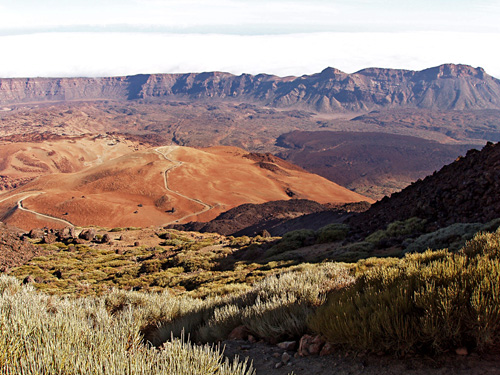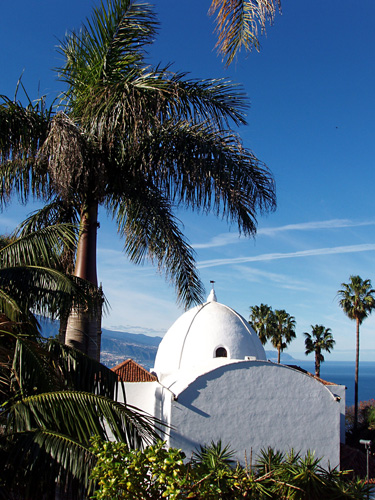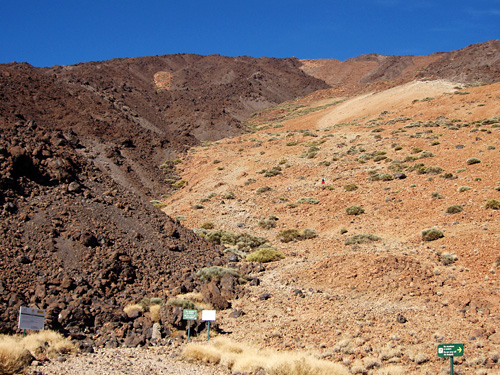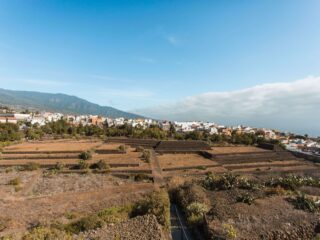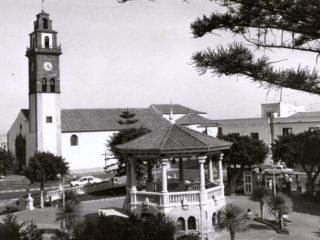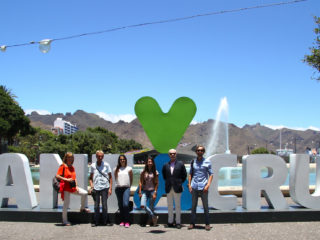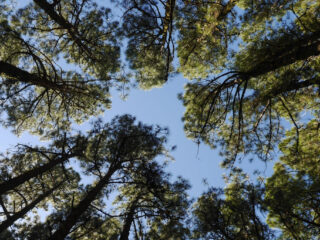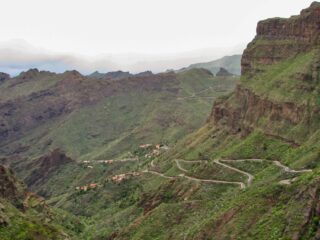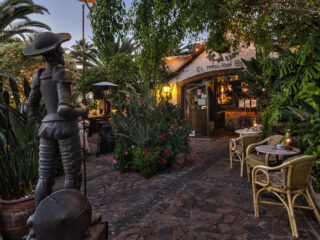The second part of our Following in the Footsteps of Britain’s Victorian Explorers on Tenerife follows Richard and Isabel Burton on their journey from El Sauzal to the top of the world.
There are worse spots to be abandoned on Tenerife than El Sauzal. The town’s gleaming white Church of San Pedro Apostle with its Mudéjar dome is almost as old as the conquest itself. It once served as home to the island’s council when the capital was ravaged by plague. Below the church the former communal washing area of Los Lavaderos is a maze of tropical gardens whose paved walkways serpentine down the cliff-side.
Although the Burtons clearly liked El Sauzal they were keen to progress, but despite Burton offering the locals a substantial amount of money, none were keen to help out.
“They shook their heads, wrapped their old blanket-cloaks around them, and stretched themselves in the sun like dogs after a cold walk,” wrote Richard, whilst Isabel amusingly observed “”¦they have nothing, and want nothing but sleep and independence”¦”
Eventually Burton persuaded a passing muleteer to take them to La Orotava and they continued on their way, passing through La Matanza where De Lugo, with his soldiers armed with pikes, swords and cannon, was defeated by the Guanche armed with sticks and stones. The mural depicting a triumphant Guanche beside a stricken knight at the entrance to the village illustrates where the Matanceros allegiance lies in that historic battle.
It’s not the prettiest road trip on Tenerife, but there are hidden gems to be discovered along its route. There are old haciendas and ancient inns, possibly even the ones that travellers like Burton stopped at for refreshments. In La Victoria the centenary pine, where De Lugo held mass after returning and wreaking vengeance on the Guanche, still stands in the town centre. At Cuesta de la Villa the warrior king Bencomo’s cave, now home to a herd of goats, lies hidden in the folds of a narrow ravine.
Below Bencomo’s cave is Humboldt’s Mirador where Richard and Isabel Burton turned a corner and were faced with their first clear view of the Orotava Valley. Both were enchanted by the vision that lay before them, moving Burton to write:
“”¦At last we learned why the Elysian Fields, the Fortunate Islands, the Garden of the Hesperides”¦were such favourites with the poets.”
When the Burtons reached La Orotava they were taken to an inn whose façade was described by Isabel as being an ancient relic of Spanish-Moorish grandeur.
Although they planned to spend a month in the town, Richard felt that so far he’d simply been following in the footsteps of other travellers. He was keen to scale the peak even though it was March and he’d been advised that at this time “˜furious winds threaten to sweep away intruders like dry leaves’
On the morning of March 21 1863, Richard, Isabel, a guide, 3 muleteers, two horses and two mules set off along the Camino de Chasna to scale Mount Teide.
At that time distances were a tad vague and all they knew was that the round trip was somewhere between 18 and 32 miles. The route to Las Cañadas took them past terraces growing potatoes and wheat, apple and chestnut trees and brown thatched huts; not much different from the sights that accompany modern travellers in fact.
When they reached Las Cañadas Richard was captivated and wanted to build a house on the volcanic plains whilst Isabel commented that the sun rained fire and blistered their faces and hands. The Burtons reached the Estación de los Ingleses without incident and set up camp for the night. They drank local wine and feasted on fowl, sausages, salt fish and gofio around a roaring fire then settled down for the night, but not before Richard and the Canarios had a good-natured argument about theology that ended with the Canarios deciding that Richard was an infidel.
At 3.30am they rose, warmed themselves with some hot coffee, using brandy as milk, and set off for the peak through the pumice and obsidian landscape.
Unlike climbers today, the Burtons had made the journey on horseback but the higher they ascended, the incline combined with snowdrifts meant they had to dismount at the Estación de los Alemanes and make the final part of the journey on foot.
Isabel discovered that scrambling up the steep slopes, occasionally dropping to her hands and knees to proceed, soon caused her body heat to rise, and to cool down she discarded her outer clothes as she climbed until she was left in only her petticoat and blouse; this was no ordinary Victorian lady.
At 7.40am the Burtons reached the peak of Mount Teide and stood proudly atop Tenerife’s world. At that point the guides handed out cigars to celebrate and confided that they had been seriously worried about the climb. No-one had attempted a winter ascent since 1797 and it had been deemed impossible by the people of La Orotava. As for Isabel, they hadn’t believed a woman could even reach the Estación de los Ingleses and yet there she stood on the very peak of Mount Teide in her underwear.
Richard and Isabel’s accounts of their visit to Tenerife paint a fascinating portrait of that period of the island’s history.
Follow in their footsteps and it’s still possible to experience a flavour of the island that existed whenTenerife was all shiny and new in the eyes of these Victorian adventurers.
